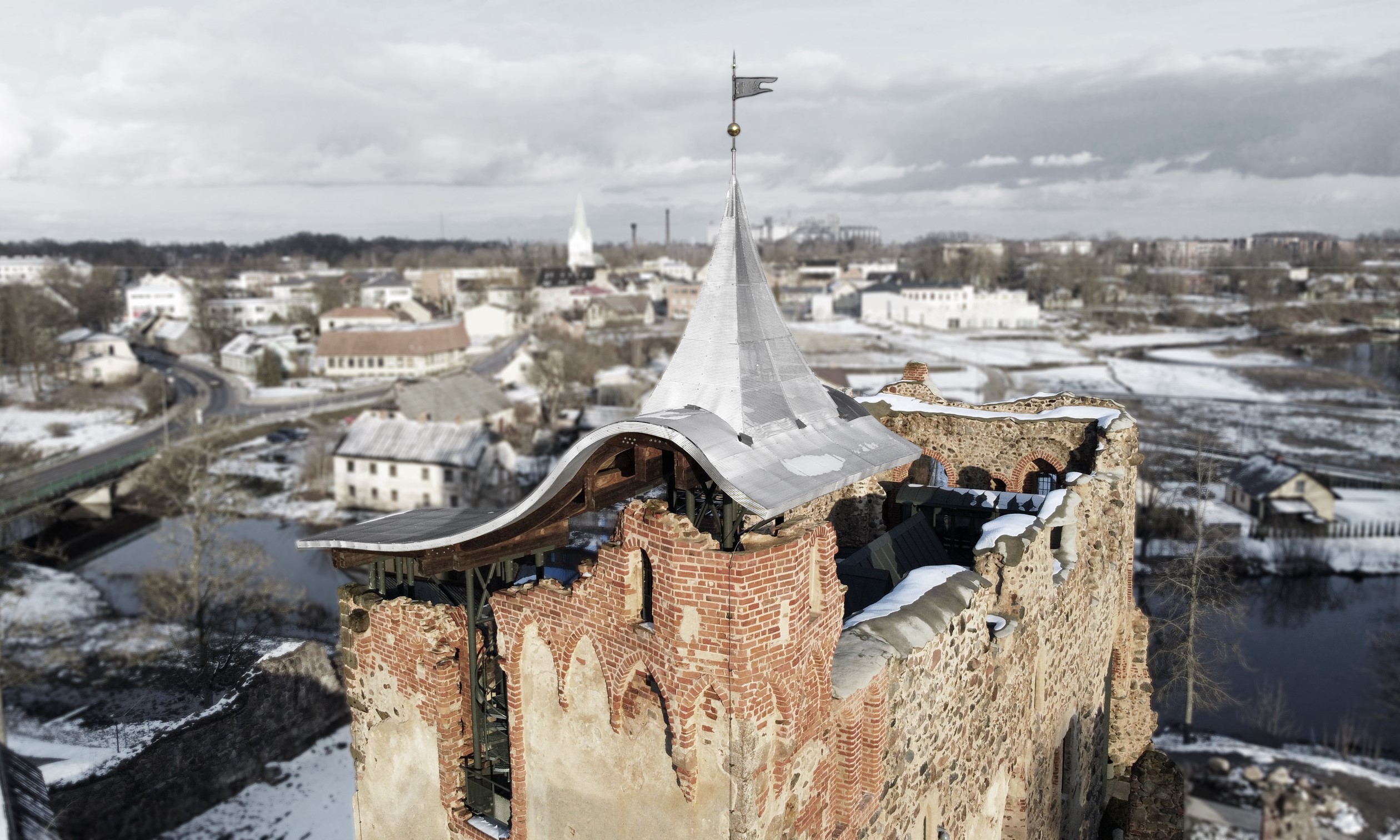
Preservation of cultural and historical heritage is an essential tribute to history for future generations.
With this goal in mind, the restoration of the Ruins of the Livonian Order castle in Dobele began.
The proposal from Latvia is part of the applications submitted to the 2021 New European Bauhaus award prizes in
"Preserved and transformed cultural heritage."
Architect Pteris Blms came up with a bold idea to build a space in the ruins of modern materials, keeping the existing silhouette without interfering with the old by combining old masters and new technologies.
Most conservative work and local restoration were carried out in the construction segment to protect the masonry parts, where technical conservation was vital for human safety. The project's development and building licenses took 15 years, with periodic disruptions.
Utmost care was taken to preserve the plaster, which is one of the vital distinguishing values of the Dobele castle ruins compared to other similar Latvian structures.
The new structures and surfaces are subjugated to a set of neutral historical elements with a plaster finish. The interior incorporates carved stretched sustainable metal mesh in the handrail parts; the perforations of the roof terrace level outside wall are created in a lattice to ensure the safety of visitors—allowing them to become acquainted with the object's uniqueness by learning stories.
The restored remains include a museum, an information centre, and a versatile convention space. The basement houses the exhibits, technological facilities, and public restrooms. The ground and basement floors are wheelchair accessible. The railing supports have a Braille pattern.
Heating and ventilation equipment is housed on the roof terrace level, providing views of the surrounding countryside.
Extensive use of glass and extended steel constructions gives the impression of transparency and lightness. Thus, the building's profile gains a new element: the western wall is covered by a roof, with a vertical accent above the ruins of the southwestern tower's walls.
📸 © European Union
- Reference
- Prizes 2021, Other Applications
- Project locations
- Dobele, Latvia
